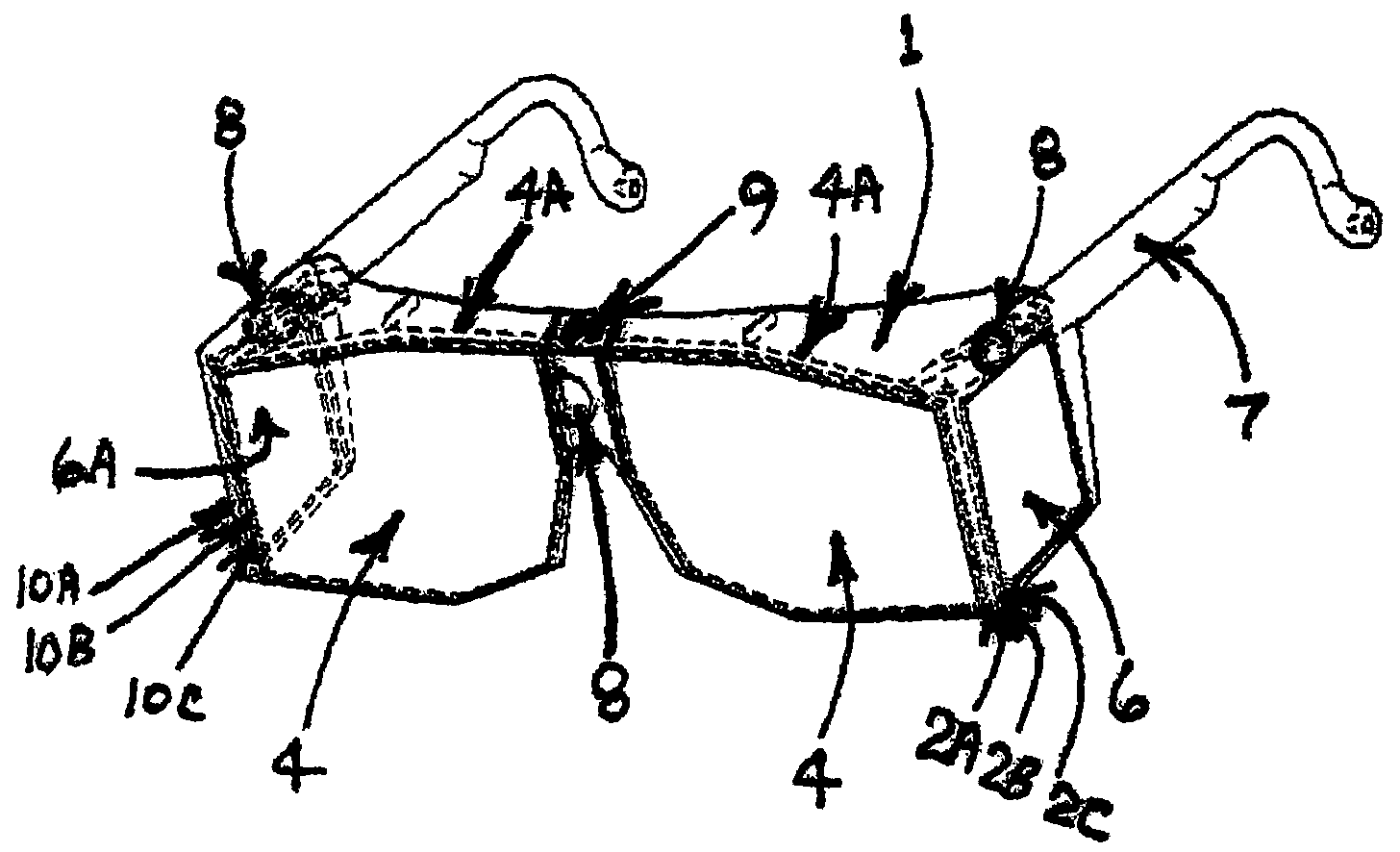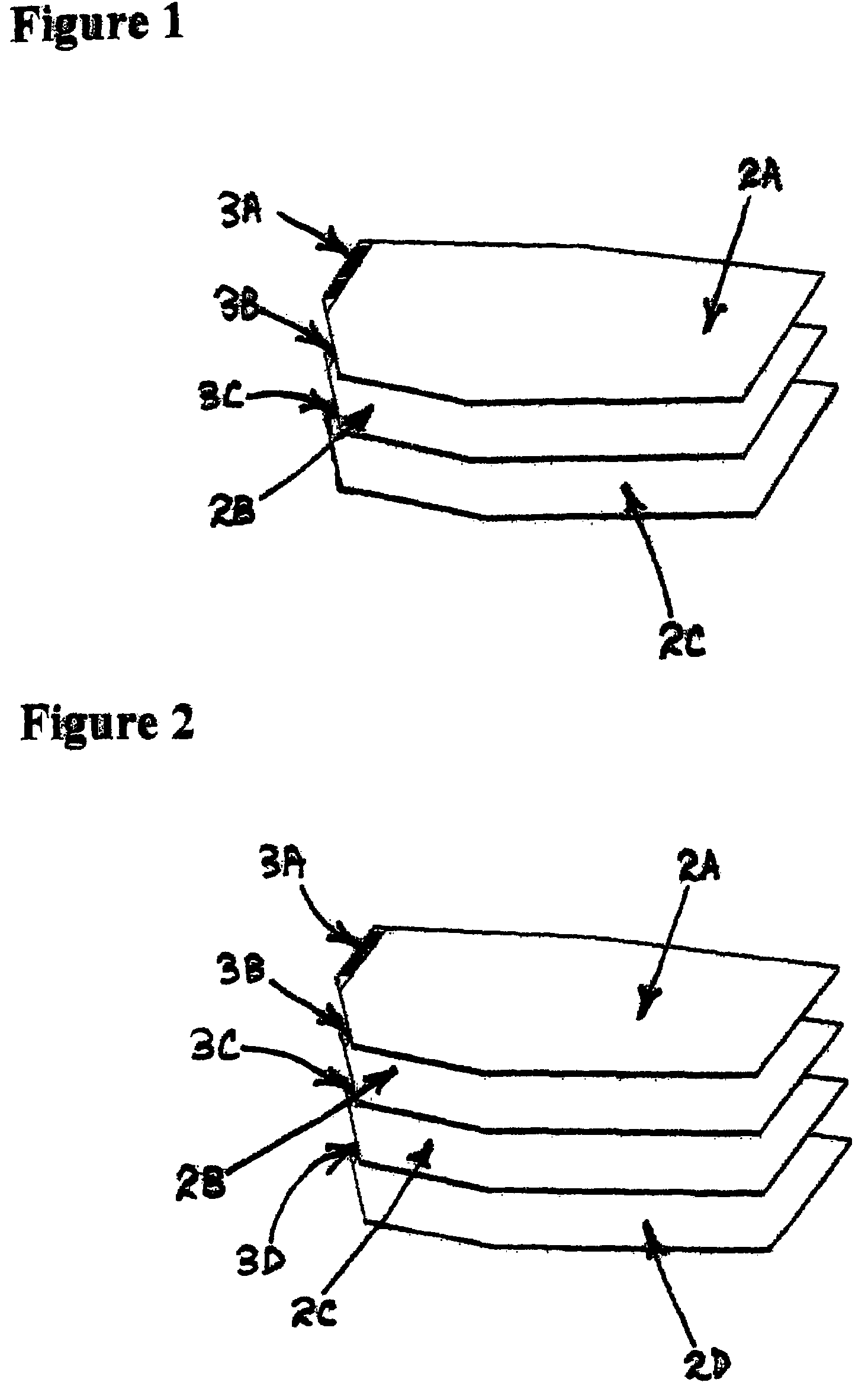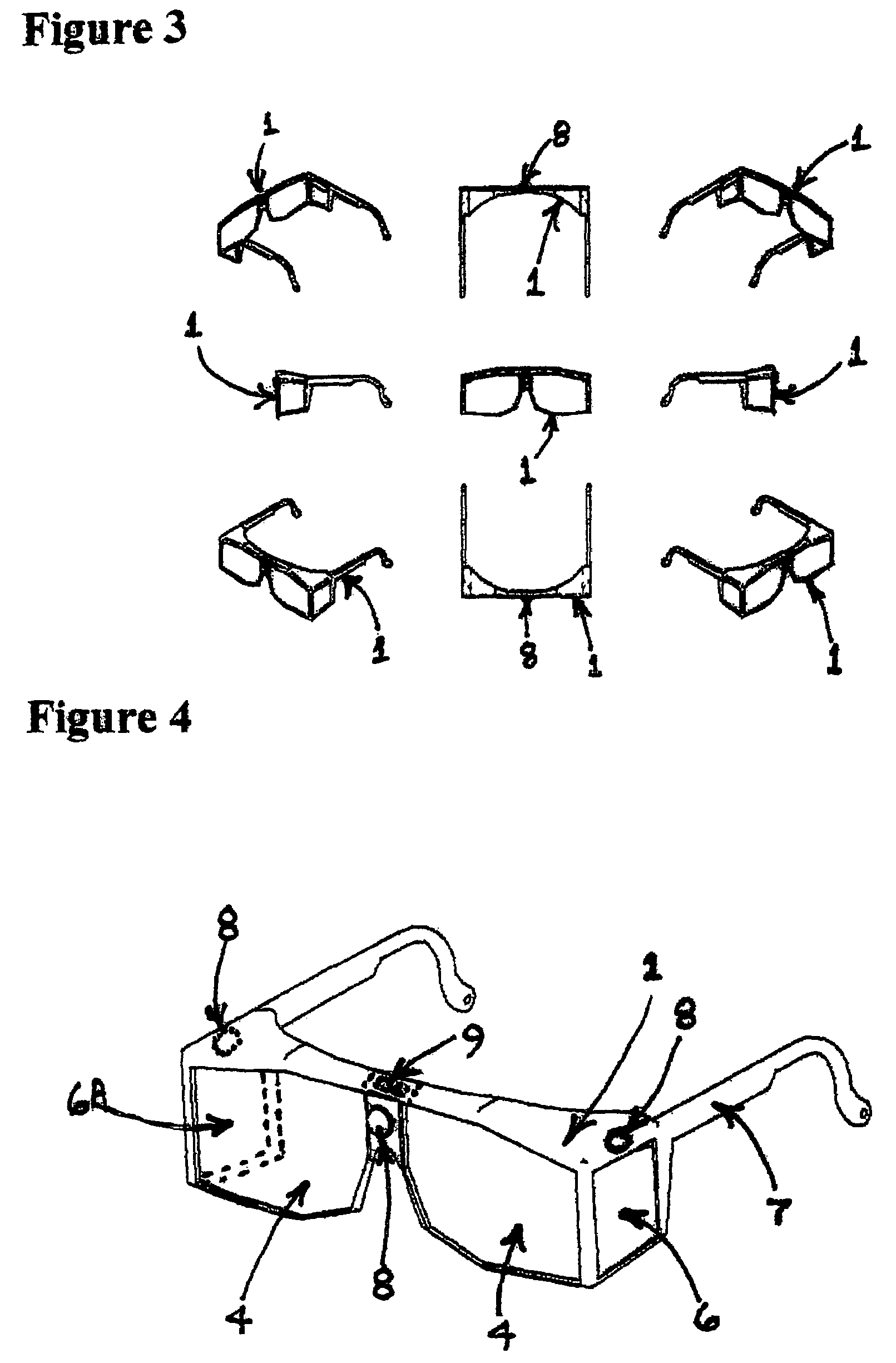Active laser protection system
a laser protection and active technology, applied in the field of laser technology, can solve the problems of eye tissue damage, eye surgery, eye damage, etc., and achieve the effect of maintaining visual acuity and full light spectrum viewing
- Summary
- Abstract
- Description
- Claims
- Application Information
AI Technical Summary
Benefits of technology
Problems solved by technology
Method used
Image
Examples
Embodiment Construction
I. Preferred Embodiments
A. Eyewear Embodiment
[0039]With reference now to the drawings, and in particular to FIGS. 1–5 thereof, a new and novel Laser Protection System (LPS) device embodying the principles and concepts of the present invention is depicted in these drawings as comprising four major components: 1) an LPS Frame (7); 2) one or more color Liquid Crystal Display (LCD) Panels (2A,2B,2C,2D,10A,10B,10C) sandwiched between Protective Lenses (4,4A,6,6A) mounted in the LPS Frame (7); 3) one or more Laser Sensors (8) electronically connected to; 4) a Power Supply and Microprocessor (9) that translates the input it receives from the Laser Sensors (8) and correspondingly activates one or more of the LCD Panels (2A,2B,2C,2D,10A,10B,10C) in response thereto, and the Active Laser Protection System Goggles are generally designated by the reference numeral (1).
B. Contact Lens Embodiment
[0040]With reference now to the drawings, and in particular to FIG. 6 thereof, a new and novel Laser P...
PUM
| Property | Measurement | Unit |
|---|---|---|
| wavelengths | aaaaa | aaaaa |
| wavelengths | aaaaa | aaaaa |
| wavelength | aaaaa | aaaaa |
Abstract
Description
Claims
Application Information
 Login to View More
Login to View More - R&D
- Intellectual Property
- Life Sciences
- Materials
- Tech Scout
- Unparalleled Data Quality
- Higher Quality Content
- 60% Fewer Hallucinations
Browse by: Latest US Patents, China's latest patents, Technical Efficacy Thesaurus, Application Domain, Technology Topic, Popular Technical Reports.
© 2025 PatSnap. All rights reserved.Legal|Privacy policy|Modern Slavery Act Transparency Statement|Sitemap|About US| Contact US: help@patsnap.com



